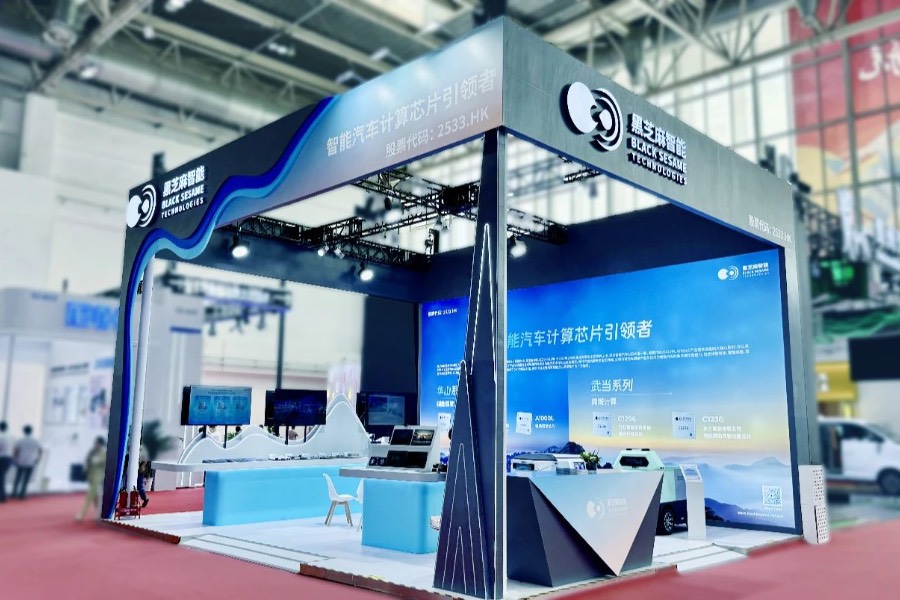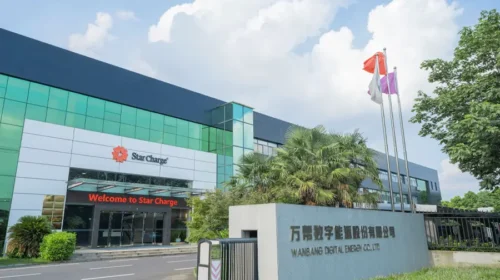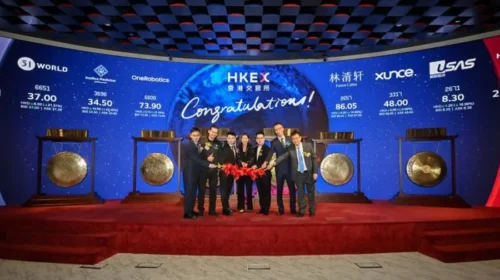Black Sesame throws down the gauntlet to Qualcomm in autonomous driving race

The startup’s internally developed C1200 series chips can substitute for the U.S. giant’s higher-end offerings, forming a key plank to its expansion strategy
Key Takeaways:
- Black Sesame continued to lose money in the first half of the year amid heavy spending on marketing and product development
- The company posted strong revenue gains on the growing market for autonomous driving chips, and could further expand into the robotics arena
By Bai Xin Rui
Chinese chip stocks are enjoying a heyday this year as they jockey to catch up with and provide cheaper substitutes to their Western peers, exemplified by this year’s near-doubling of shares for Cambricon Technologies, touted as China’s answer to Nvidia. Among that wave, autonomous driving chip play Black Sesame International Holding Ltd. (2533.HK) — fresh off the one-year anniversary of its Hong Kong listing — showed it still has a ways to go with a midyear financial report revealing a continuing sea of red ink. But the report also contained a silver lining in the form of rapid revenue growth, which clocked in at 40% in the first half of 2025.
Established in 2016, Black Sesame focuses on chips and related technology for autonomous driving. Its initial Huashan series of system-on-chip (SoC) products came to market in 2019, providing the computational backbone for advanced driving assistance systems (ADAS) and fully autonomous driving platforms. By 2021, Black Sesame had added its Wudang line — offering cross-domain SoC variants capable of consolidating multiple core vehicular functions.
Driven by growing demand for those and other products used in autonomous driving systems, Black Sesame’s revenue rose 40.4% year-on-year to 250 million yuan ($35 million) in the first half of this year. The big majority of that came from its assisted driving products segment, whose revenue jumped 41.6% year-on-year to 240 million yuan, making up 94% of the total.
Despite the revenue momentum, the company flipped to a net loss of 760 million yuan for the period. Here, however, we should note the company’s year-ago profit was rooted in nonrecurring gains, notably a 1.93 billion yuan paper gain tied to valuation changes in financial instruments. Excluding such gains, Black Sesame’s loss in the first half of this year would have narrowed slightly to about 550 million yuan from a 600 million yuan loss a year earlier.
R&D spending dwarfs revenue
The company’s ongoing losses owe primarily to massive R&D spending, which reached 620 million yuan in the first half of this year – more than double its revenue. What’s more, the company’s cost of sales for assisted driving products and solutions more than doubled year-on-year to 190 million yuan, far outpacing revenue gains for those products. Those were two of the main factors behind Black Sesame’s latest six-month loss.
But smart-driving technology is a long-haul race, and most believe the sector has huge growth potential. Grand View Research said China’s smart-driving vehicle market was worth 43.6 billion yuan in 2024, and should grow to over 155 billion yuan by 2030 as penetration increases. As a company focused on smart-driving chips for cars, Black Sesame stands to benefit significantly from that growth.
Smart-driving technology is still in its early stages. The technology is generally divided into levels 0 to 5, where Level 0 (L0) requires complete driver control and Level 5 (L5) is fully autonomous. Most systems currently fall between L2, providing some basic automation, and L4, which approaches full automation. Black Sesame’s chips currently cover mainly L1 to L3 autonomous driving levels, which have the most mass-market potential.
Smart-driving architectures rely heavily on chips, which can be divided into three key areas: perception, decision-making, and execution. Perception systems use sensors on the vehicle, such as cameras or laser-based technology called Lidar, to collect data while the car is moving. That data is then passed to the decision-making system, which uses algorithms to calculate the driving path. The result is then sent to the execution system, which controls the vehicle’s route and speed based on the decision.
Black Sesame’s products are a key technology in that mix. Current smart-driving systems often use SoC products that integrate multiple processors, including central processing units (CPUs), graphics processing units (GPUs), and application-specific integrated circuits (ASICs). SoC products like Black Sesame’s are popular for their compactness, integrating different processors into a single product, which helps reduce costs.
Major domestic brands as clients
Black Sesame’s current key customers include some of China’s biggest carmakers, such as Geely, BYD and Dongfeng Motor, among others. Its technology has been integrated into multiple models to date, including Geely’s Galaxy series. Outside its core autonomous driving products, Black Sesame is also pushing into the emerging robotics space. The company currently provides processing modules for the dexterous hands of humanoid robots manufactured by Fourier Intelligence. It has also collaborated with Xiaomi and Unitree, which burst to fame earlier this year when its dancing robots were featured on a popular TV show.
While growth prospects in the smart driving chip space remain strong, competition is also intense. Competitors include giants like Nvidia (NVDA.US), as well as Tesla’s (TSLA.US) FSD system and products from U.S. chip giant Qualcomm (QCOM.US). Black Sesame also faces competition from domestic rivals like Huawei and Horizon Robotics (9660.HK).
Still, Black Sesame’s C1200 series cockpit controller chip – built using 7 nanometer technology – is one of the few domestically made alternatives at the premium end of the market, able to handle up to 12 HD camera inputs to offer capabilities rivaling Qualcomm’s current mainstream cockpit chips. Products from the series can also be deployed in robot brain and cerebellum systems, helping Black Sesame to stand out from its rivals.
Despite being profit-challenged and trading at an elevated price-to-sales (P/S) ratio of around 9 – a factor likely curbing near-term gains for its stock – Black Sesame could warrant long-term attention from investors. Its established partnerships with multiple domestic automakers and entry into the robotics market suggest strong future growth potential. That should help to attract investors over the short- to medium-haul, as long as its revenue continues to increase at a strong clip in line with growth for the autonomous driving and robotics sectors.
To subscribe to Bamboo Works weekly free newsletter, click here




